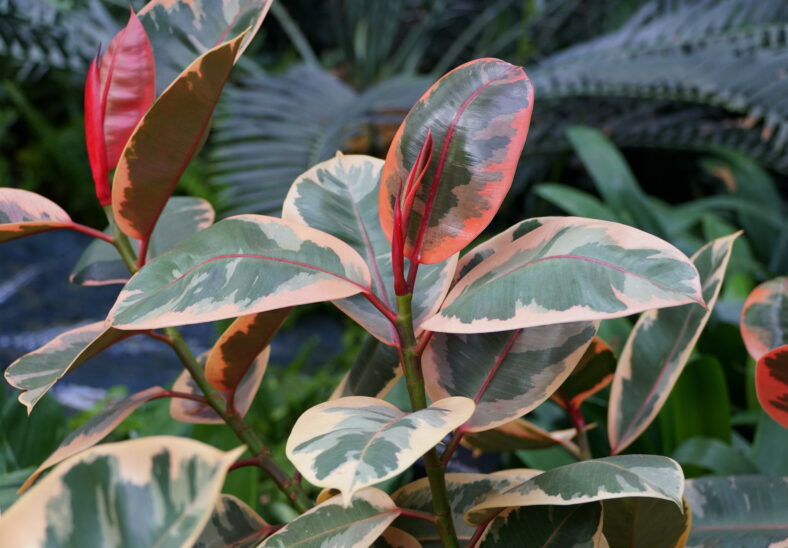How To Care For A Ficus Ruby, A Statement Piece For Your Living Space

Ficus ruby, featuring shiny green leaves with pink, red, and cream edges, is more than just a plant; it’s a statement piece that looks stunning in any living space.
This variegated variety of rubber tree hails from the lush forests of India and Malaysia, where its latex-rich sap has been prized for rubber production. But aside from its practical uses, the ficus ruby is also beloved for its bold, colorful foliage.
Here’s how to care for this eye-catching plant, which will add a pop of personality and charm to your home.
How To Care For Ficus Ruby
Despite the ficus ruby being native to warm and humid climates, it’s surprisingly adaptable to indoor living in milder regions.
It grows best in temperatures ranging from 60°F to 80°F, with moderate humidity levels of 40% to 60%. To keep your plant comfortable, just make sure it’s positioned away from chilly drafts or air conditioning vents.
Next, ficus ruby thrives in rich, well-draining potting mix with a neutral to slightly acidic pH. A blend that incorporates peat or coconut coir will help retain moisture; meanwhile, adding perlite or coarse sand can ensure proper drainage.
A standard houseplant potting mix is perfect. You can also create a custom blend by mixing equal parts of coarse sand, orchid bark, coconut coir, or peat.
To help your plant flourish, it’s recommended that you feed it regularly during its growing season. You should use a balanced liquid houseplant fertilizer at half strength and start in the early spring when new leaves begin to emerge.

Sign up for Chip Chick’s newsletter and get stories like this delivered to your inbox.
Afterward, continue feeding every two weeks throughout the summer. You can stop fertilizing in the colder months once the plant’s growth naturally slows.
When deciding where to place your ficus ruby, keep in mind that it needs plenty of bright, indirect light. Enough light exposure will help bring out this plant’s vibrant colors. So, an east-facing window is ideal since it offers gentle morning sunlight.
Otherwise, you can position it a few feet away from a west or south-facing window. Just avoid exposing it to direct sunlight, as this can actually scorch its leaves and slow its growth.
While watering this variety, the goal is to ensure its soil is evenly moist without allowing it to become waterlogged.
You should keep an eye on soil moisture and give your plant a drink whenever the top inch or two of soil feels dry to the touch.
Don’t let the soil dry out completely before you water, and at the same time, make sure your plant is never sitting in excess water because that can lead to root rot.
Ficus ruby can reach between six and 10 feet tall when grown indoors, and pruning isn’t necessary. Still, if it gets too big or begins to outgrow your space, you might want to trim it back.
In these instances, you can use sharp pruners to remove up to 30% of its growth. This is best done in late winter when the sap flow is slower.
Be cautious when pruning and wear gloves to avoid any skin irritation from the sap. Also, to prevent any mess in your home, you can lay down some newspaper or prune it outside.
Last but not least, ficus ruby can become affected by common pests like aphids, mealybugs, scale, whiteflies, spider mites, and thrips.
Soak a cotton ball in rubbing alcohol and gently dab the pests to get rid of them. For more severe infestations, you can treat your plant with horticultural soap or neem oil.
More About:Gardening




